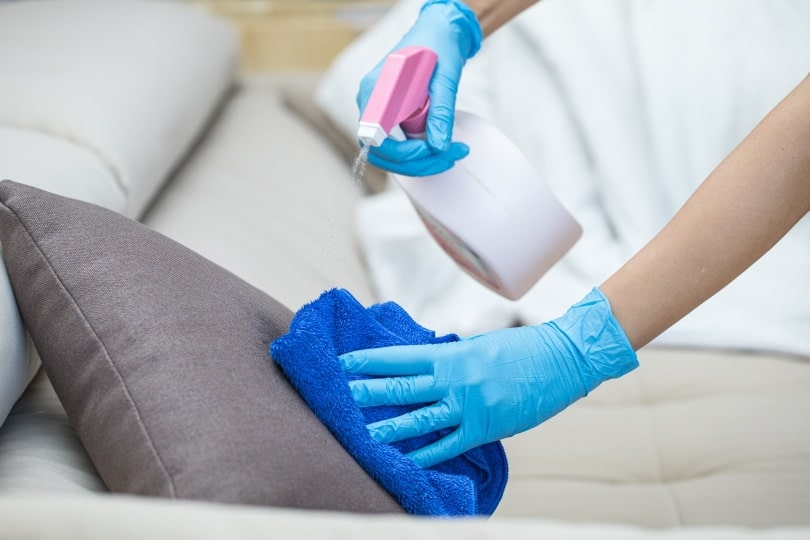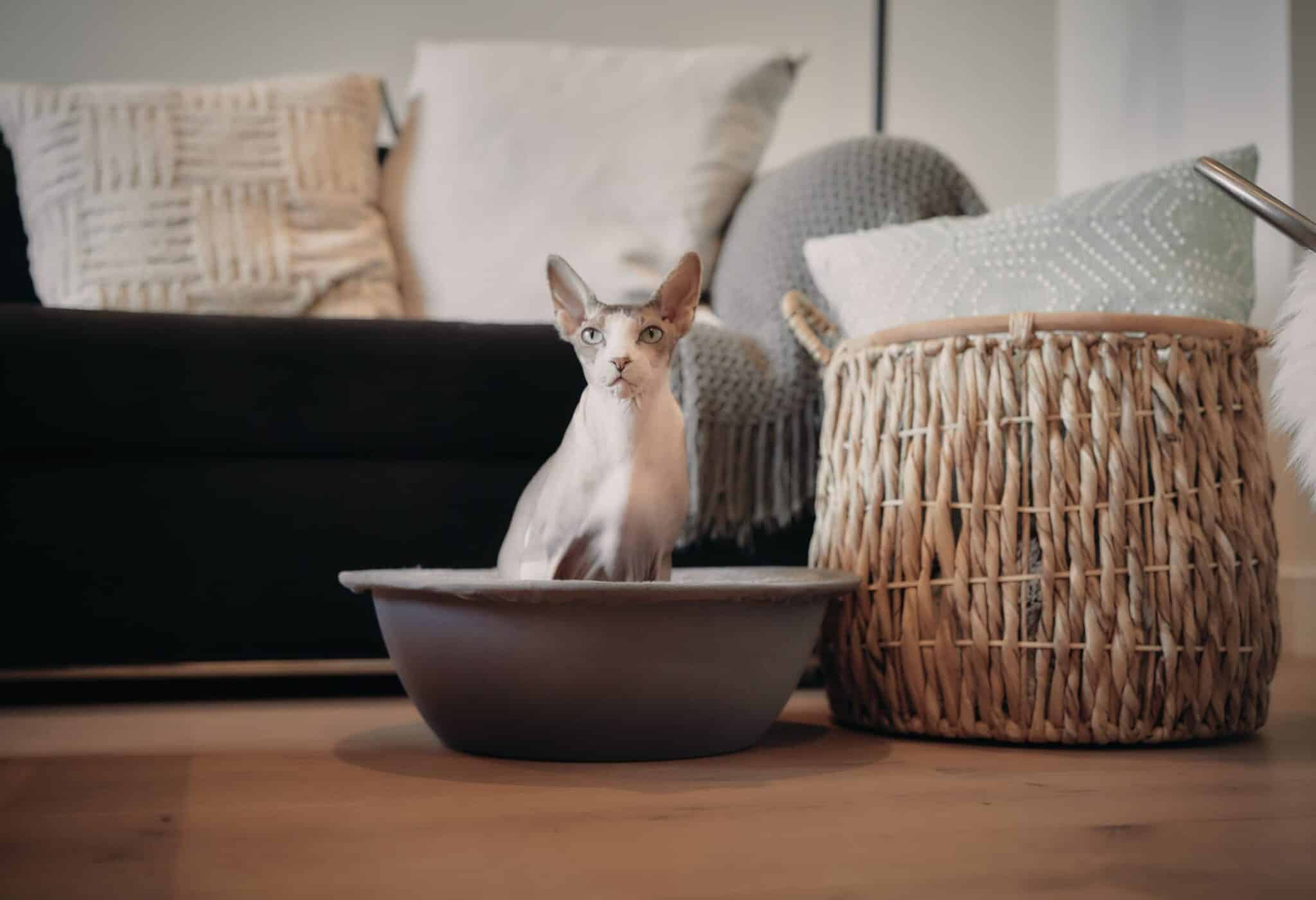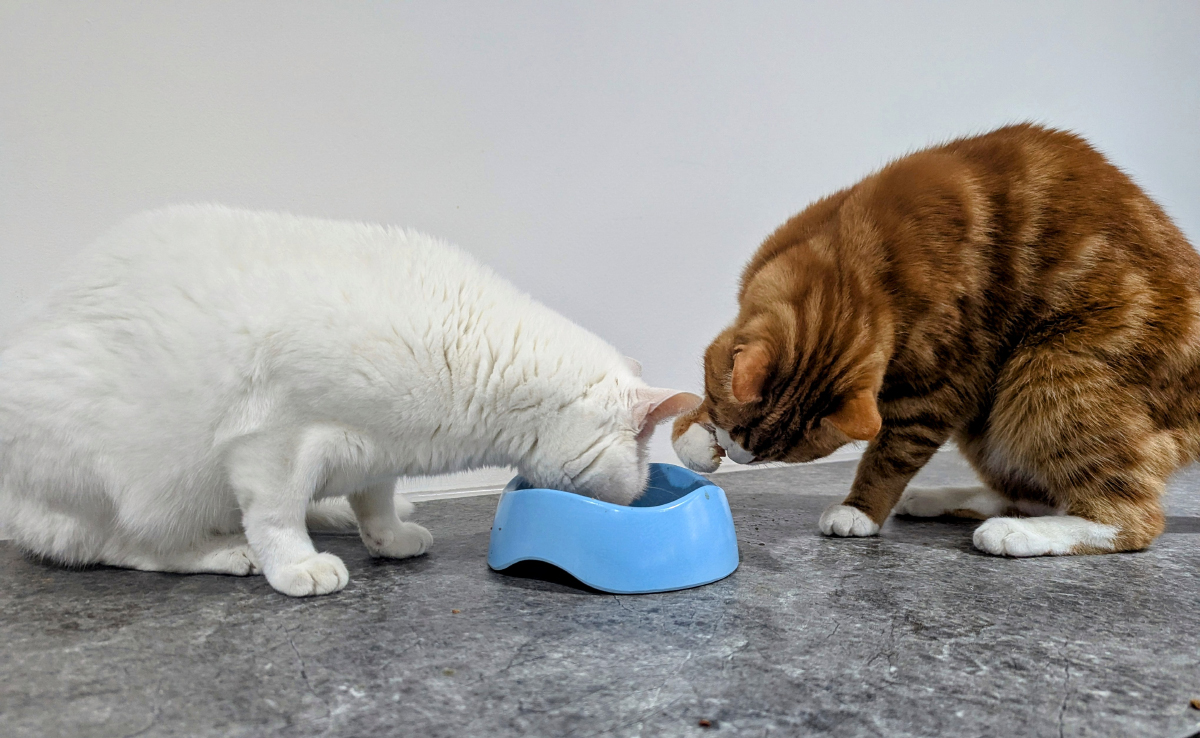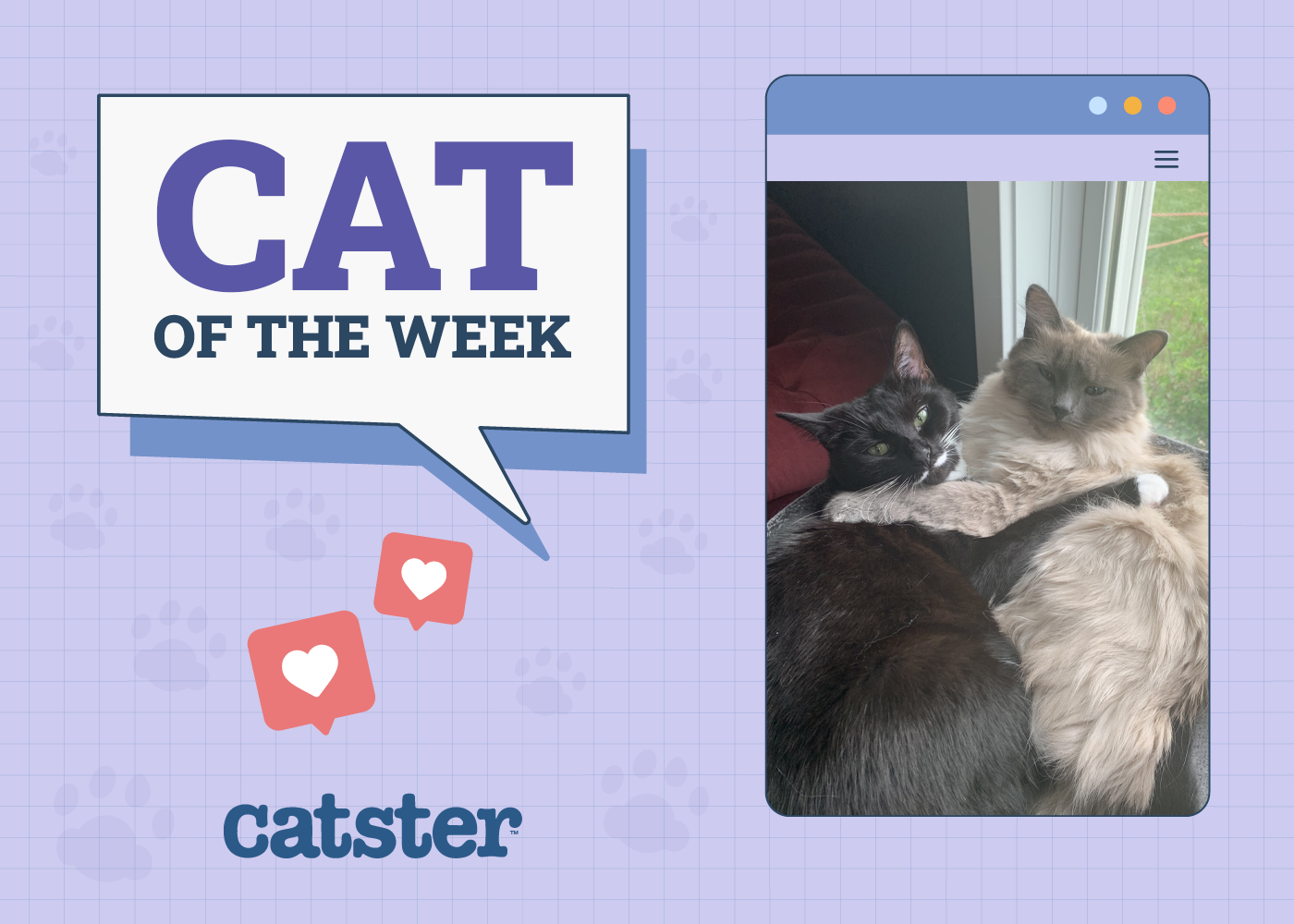Click to Skip Ahead
Cats are always adorable, but sometimes they do something truly gross, like throw up all over the couch. Unfortunately, it’s left to us devoted owners to clean up after them. If you come home to find a pile of cat vomit on the couch, you’ll likely want to get it cleaned up straight away. Vomit can stain soft furnishings, and the longer it’s left, the less likely that you’ll be able to get rid of that unpleasant smell.
If you don’t have a dedicated cleaning spray, the good news is that you’ve probably got most of the ingredients for another cleaning method!
Besides cleaning the cat vomit from your couch as soon as possible, you should try to figure out why your cat was vomiting in the first place.

The 3 Best Ways to Clean Cat Vomit Out of a Couch
1. Use a Professional Stain Remover
An enzymatic formula effectively removes organic stains like vomit from your couch and leaves behind a pleasant scent instead.
Did you know there's an enzyme cleaner that does it all? The Hepper Advanced Bio-Enzyme Pet Stain & Odor Eliminator Spray permanently removes the very worst smells and stains (truly, everything you can imagine!), and they offer a 100% satisfaction guarantee! Click here to get yourself a bottle.
- ADVANCED ENZYMATIC CLEANER - Penetrates the most stubborn smells and stains at the deepest molecular...
- FOR ANY MESS, ON ANY SURFACE - This pet odor eliminator cleans your carpets, floors, furniture,...
- FRESH, NATURAL ODOR - Our unique formulation doesn't rely on dangerous or unpleasant chemical...
At Catster, we’ve admired Hepper for many years, and decided to take a controlling ownership interest so that we could benefit from the outstanding products of this cool cat company!
- First, test the fabric that you want to treat, for colorfastness. Apply spray to a hidden area, like the back of the couch or the base of a cushion. Leave for 1 hour before wiping away. If there’s no sign of any color leaking, you can continue to treat the intended area.
- Spray the stain and leave for 10 minutes.
- Blot with a damp cloth.
- Repeat as necessary.
2. Using Baking Soda and Club Soda
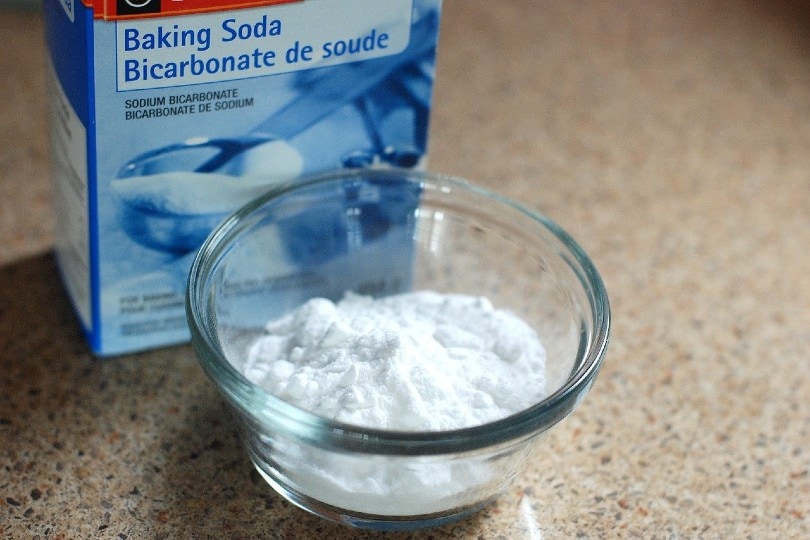
For this technique, you’ll need:
- Baking soda
- Vacuum cleaner
- Club soda
- Warm water
- Cleaning cloth
- Paper towels
- First, use a paper towel to remove as much of the vomit as possible. If it’s dried, you can sprinkle warm water over the stain as well.
- Liberally sprinkle baking soda all over the stain, and leave for 2 hours.
- Use your vacuum cleaner to remove the baking soda.
- If the stain is still visible, repeat steps 2 and 3.
- Pour a small amount of club soda over the stain.
- Rinse with warm water and a cleaning cloth.
3. Vinegar and Dish Soap
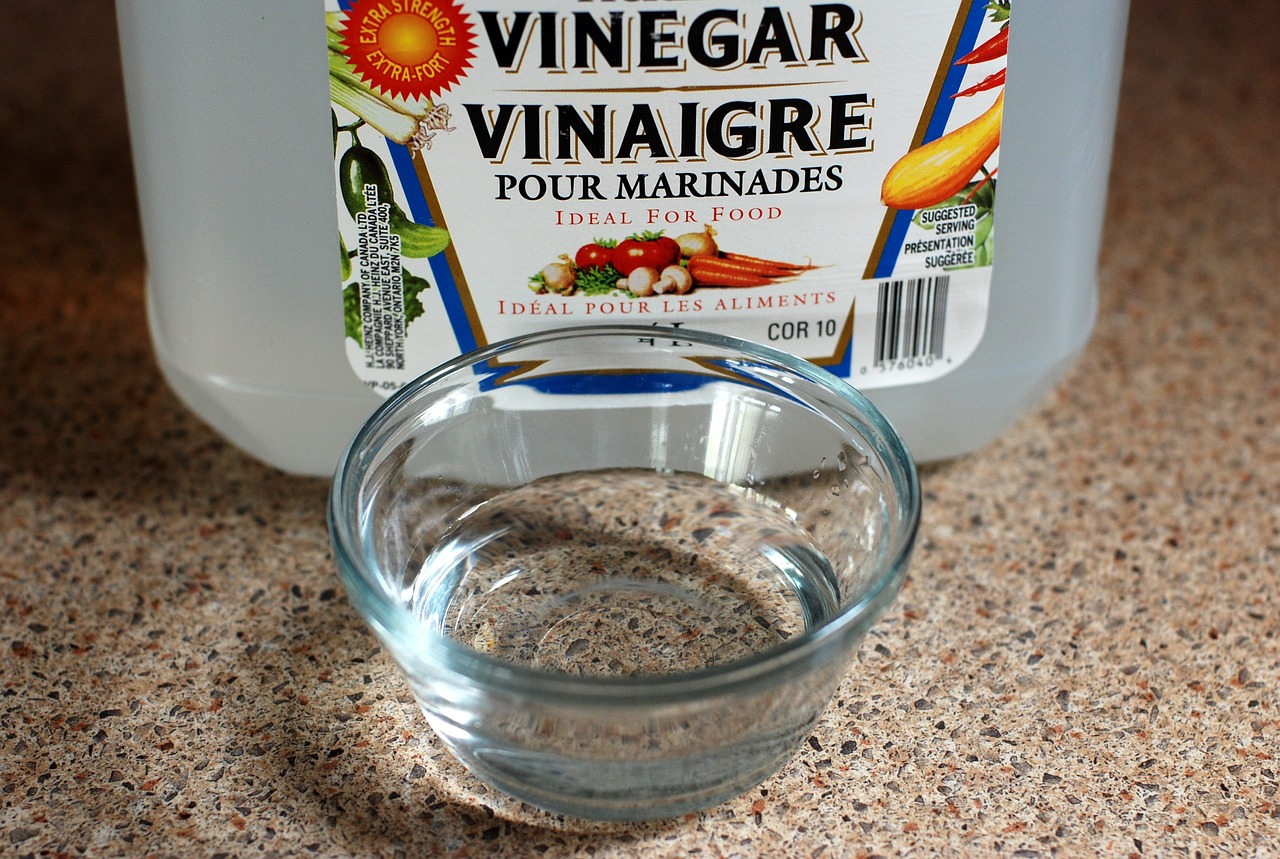
This is a good method to use for yellow vomit that contains bile. The acid in bile can damage fabrics and cause permanent staining. The best chance of removing yellow vomit without your couch being damaged is to remove it as soon as possible and clean using this technique.
You’ll need:
- Paper towels
- White vinegar
- Cleaning cloth
- Warm water
- Dish soap
- Tablespoon
- Baking soda or borax
- Remove as much of the vomit as you can, using paper towels.
- Blot the stain with a wet cleaning cloth.
- Mix ½ cup white vinegar with 1 tablespoon of dish soap. Whisk the mixture until it becomes foamy.
- Scoop the foam out using a tablespoon, and put it on the stain. Rub in lightly using a paper towel.
- Repeat two to three times.
- Sprinkle over a layer of baking soda or borax. Leave overnight.
- Vacuum up the powder, and wipe the stain with a damp cleaning cloth.

Why Did Your Cat Vomit in the First Place?
Besides cleaning up after your cat, it’s important to figure out what caused them to vomit in the first place. From a straightforward cause like eating too fast to something more serious like an illness, here are a few of the main reasons that cats vomit.
1. After Eating
Some cats eat too quickly and then regurgitate their food before it’s been digested. While this is slightly different from true vomit, it still requires cleaning up! Cats who regurgitate their food should be given smaller portions throughout the day or use a slow feeder bowl so they take longer to eat.
Some food allergies can cause vomiting. Cats can often be allergic to beef, eggs, fish, eggs, and wheat. If your cat vomited after eating table scraps that they shouldn’t have or after trying a new food for the first time, an allergy may be the cause.
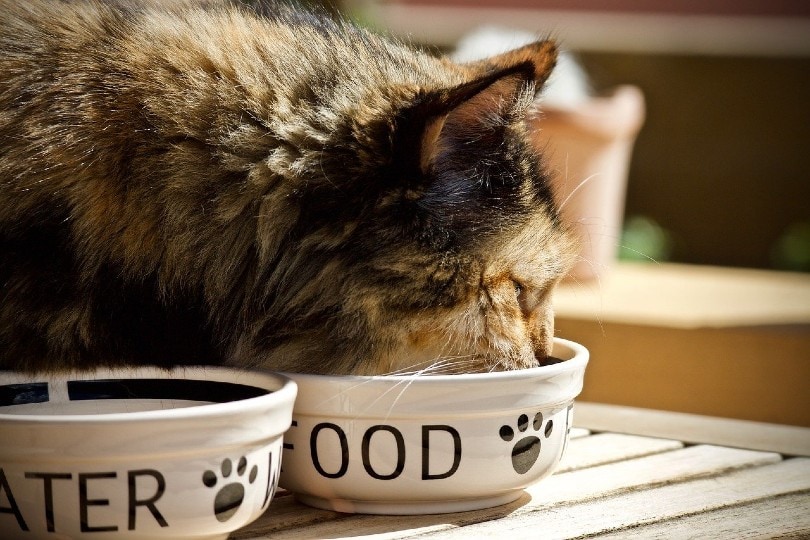
2. Eating Inappropriate Items
Sometimes, curiosity can get the better of our cats. If a cat eats something that they shouldn’t have, like a hairband, a piece of a houseplant, or the string from a toy, vomiting can be a result of their body trying to get rid of the offending item.
Some cats get into the habit of eating non-food items like cardboard or even plastic. This behavior is called pica, and it’s best to speak to your vet to find out the cause.
If you think that your cat has eaten something poisonous or sharp, call your vet for advice immediately.
3. Viral and Bacterial Infections
Respiratory, urinary tract or ear infections can all cause pain and vomiting. Cats are excellent at hiding the fact that they’re in pain or under the weather. So, a change like vomiting might be the only clue that they’re not well.
Getting your cat to the vet for an examination is the best thing to do in this scenario.
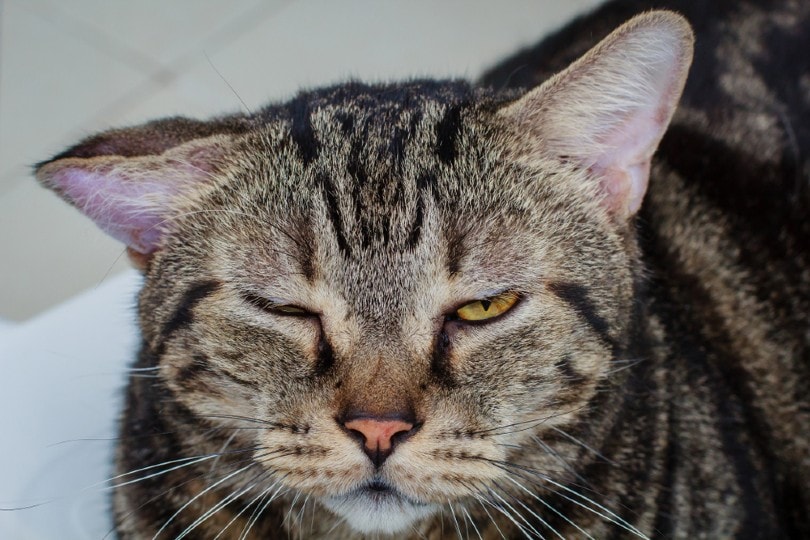
4. Parasite Burdens
Worms and other parasites that live in your cat’s digestive system can cause vomiting. This is sometimes accompanied by anemia and weight loss. Make sure you keep your cat’s anti-parasite regime up to date to reduce the risk of this happening.
5. Illness and Disease
Vomiting can be a signs of a more serious illness, like kidney failure, inflammatory bowel disease, or pancreatitis. If you notice blood in your cat’s vomit, this can also be a sign that they’re not well. Asking your vet to perform a thorough exam will help you get to the bottom of the problem.

Wrapping It Up
Now you know how to get cat vomit out of your couch. Cleaning cat vomit might not be the best part of owning a cat, but these techniques all do a great job of removing that stain for good!
Vomiting can be a sign that your cat simply ate their food too fast, but it can also be a sign of a more serious underlying illness. Speak to your vet if you’re worried, and ask them to check your cat’s overall health.
See Also:
Featured Image Credit: AngieYeoh, Shutterstock

